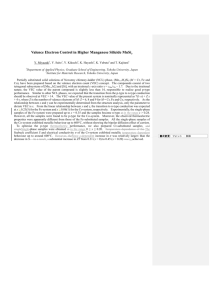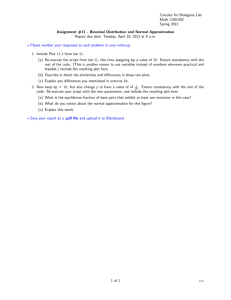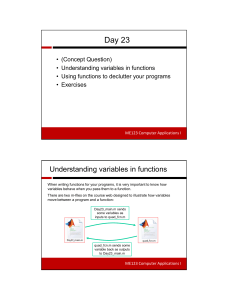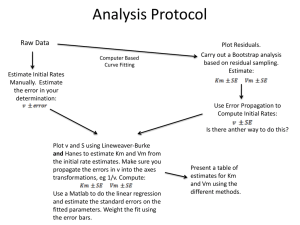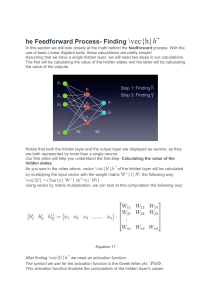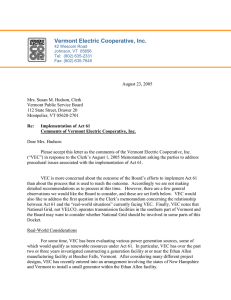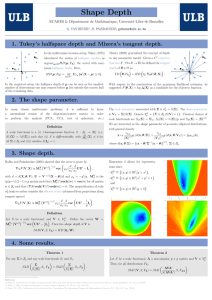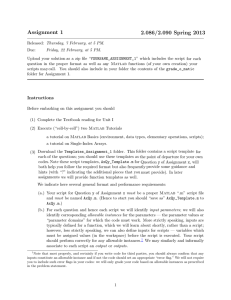Problem 5.4
advertisement
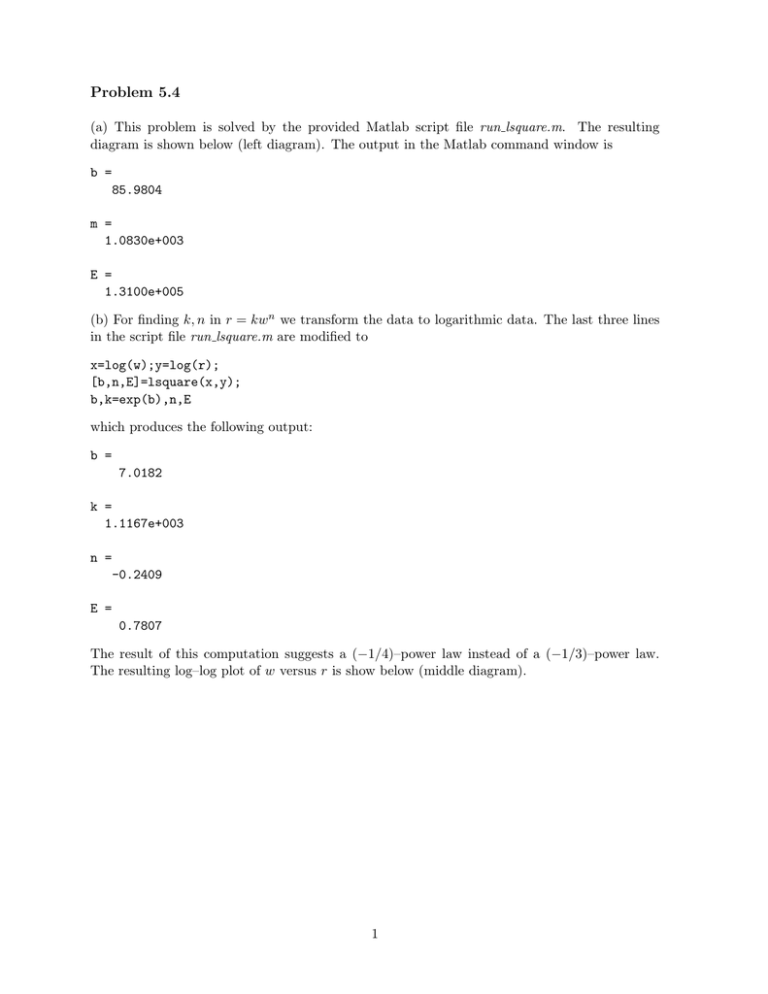
Problem 5.4 (a) This problem is solved by the provided Matlab script file run lsquare.m. The resulting diagram is shown below (left diagram). The output in the Matlab command window is b = 85.9804 m = 1.0830e+003 E = 1.3100e+005 (b) For finding k, n in r = kwn we transform the data to logarithmic data. The last three lines in the script file run lsquare.m are modified to x=log(w);y=log(r); [b,n,E]=lsquare(x,y); b,k=exp(b),n,E which produces the following output: b = 7.0182 k = 1.1167e+003 n = -0.2409 E = 0.7807 The result of this computation suggests a (−1/4)–power law instead of a (−1/3)–power law. The resulting log–log plot of w versus r is show below (middle diagram). 1 Problem 5.5 To match data (yi , xi ) to a quadratic function y = c0 + c1 x + c2 x2 , the function file lsquare.m is modified to function [c0,c1,c2,E]=lsquad(x,y) %Computation of b,m P=length(x); X=[ones(P,1) x x.^2]; vec=X\y; c0=vec(1); c1=vec(2); c2=vec(3); %Computation of error dy=y-c0-c1*x-c2*x.^2; E=dy’*dy; %Plot results plot(x,y,’ko’,x,c0+c1*x+c2*x.^2,’k-v’) legend(’data’,’model’) and saved as lsquad.m. The last line in the script file run lsquare.m is then modified to [c0,c1,c2,E]=lsquad(x,y) which produces the following output: c0 = 22.5156 c1 = 2.1804e+003 c2 = -1.7580e+003 E = 5.4214e+004 The graph of the quadratic fit is shown in the right diagram below. Diagrams: 800 700 800 7 data model data model 6.5 700 600 5.5 500 5 400 r 400 r 6 500 ln(r) 600 300 4.5 300 200 4 200 100 3.5 100 0 0 0.1 0.2 0.3 w−1/3 0.4 0.5 0.6 0.7 3 0 data model 5 10 ln(w) 2 15 0 0 0.1 0.2 0.3 0.4 w−1/3 0.5 0.6 0.7
